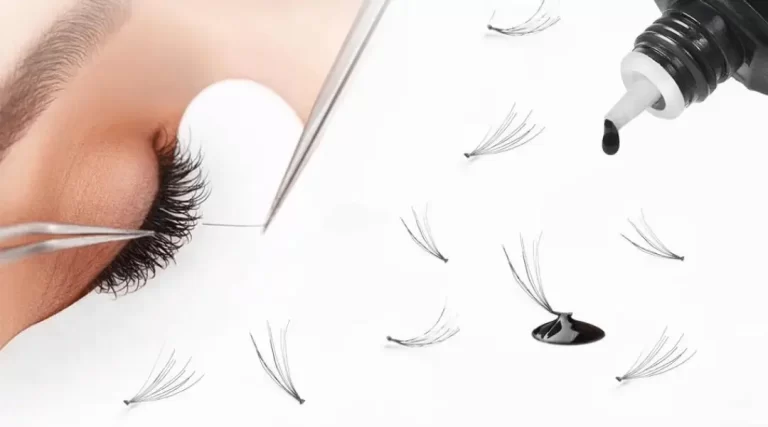PVC pipes are a common material used in a variety of applications, ranging from plumbing to electrical conduits. They are durable, lightweight, and cost-effective. However, a strong connection between PVC pipes is crucial to ensure their proper functioning and longevity.
Choosing the right adhesive for PVC pipe connections can be a daunting task, especially for those who are not familiar with the various options available. Exploring the strongest adhesive options for PVC pipe connections is like navigating through a maze of possibilities. Each option has its own set of advantages and disadvantages, and it is essential to understand the differences between them.
The right adhesive can make all the difference in the success of a project. This article will provide an objective and informative overview of the various adhesive options available for PVC pipe connections, helping readers choose the most suitable one for their specific needs.
Understanding the Importance of a Strong PVC Pipe Connection
A secure and robust connection between PVC pipes is crucial for ensuring the safety and longevity of plumbing systems. The benefits of strong PVC connections cannot be overstated as they prevent leaks, reduce the risk of pipe bursts, and ultimately save money on repairs.
Common causes of weak connections include improper installation, using the wrong type of adhesive, or failure to follow manufacturer instructions. To avoid these pitfalls and ensure a strong connection, it is important to choose the right adhesive for the job.
This leads us to the next section where we will explore solvent cement adhesives, a popular and effective option for bonding PVC pipes.
Solvent Cement Adhesives
The section on solvent cement adhesives provides a comprehensive overview of the chemical properties and bonding mechanisms of these compounds, highlighting their remarkable ability to create enduring and robust joints between two surfaces.
Solvent cement adhesives typically consist of a mixture of solvents and resins that work together to dissolve the surface of the PVC pipes, creating a strong chemical bond when they dry.
The application methods for solvent cement adhesives are fairly simple, with users applying a small amount of the adhesive to both surfaces and then joining them together, holding them in place for a few seconds to allow the adhesive to take hold.
Drying time can vary depending on the type of solvent cement adhesive used, but most take between 10-30 minutes to fully cure.
While solvent cement adhesives are incredibly effective at creating strong PVC pipe connections, they do have some limitations, particularly when it comes to their ability to work with non-PVC materials.
This is where epoxy adhesives come into play.
Epoxy Adhesives
This section offers insights into the properties and applications of epoxy adhesives, which have gained popularity for their versatility in bonding a wide range of materials, boasting an impressive tensile strength of up to 6,000 psi.
Epoxy adhesives are known for their ability to provide strong and durable bonds that can withstand high stress and extreme temperatures. These adhesives are ideal for bonding PVC pipes due to their excellent resistance to chemicals, water, and heat.
The advantages of using epoxy adhesives include their ability to fill gaps and voids, their strong bonding properties, and their resistance to impact and vibration.
Application techniques for epoxy adhesives vary, but typically involve mixing the two-part adhesive and applying it to the surfaces to be bonded. After allowing time for the adhesive to cure, the bond will be strong and long-lasting.
Ultimately, while epoxy adhesives are an excellent choice for bonding PVC pipes, they may not be the best option for all applications. The subsequent section about PVC pipe cement will explore other adhesive options that may be more suitable for specific situations.
PVC Pipe Cement
In the present section, a thorough analysis will be conducted on the various bonding agents available, in order to determine the most effective means of achieving secure and reliable connections between PVC pipes.
PVC pipe cement, also known as solvent cement, is a popular choice for bonding PVC pipes due to its ability to create a strong and permanent bond.
The cement works by chemically softening the PVC material, allowing it to fuse together and create a seamless connection.
Prior to applying the cement, a PVC pipe primer should be used to clean and prepare the surfaces for bonding.
It is important to note that the curing time for PVC pipe cement can vary depending on the temperature and humidity of the environment.
In general, it is recommended to wait at least 24 hours before applying any pressure or stress to the bonded area.
Overall, PVC pipe cement is a reliable option for bonding PVC pipes, but it is important to follow proper application techniques and allow for sufficient curing time.
Moving forward, the subsequent section will explore the process of hot air welding and its effectiveness in creating strong PVC pipe connections.
Hot Air Welding
Hot air welding is a viable method for achieving secure and reliable bonds between PVC pipes, as it utilizes heat to melt and fuse the materials together, creating a seamless connection. This technique involves heating the PVC pipes with a hot air gun until they reach their melting point, then joining them together while they are still in their molten state.
Hot air welding offers several benefits compared to other PVC adhesives, such as its ability to create a strong and durable bond that is less susceptible to damage from thermal expansion and contraction. Additionally, this method is ideal for use in harsh environments where other adhesives may fail due to exposure to chemicals or extreme temperatures.
However, hot air welding does have some drawbacks, including the need for specialized equipment and training to properly execute the technique. Additionally, this method may not be suitable for all types of PVC pipes, as some may require additional preparation or treatment to achieve a successful bond.
When considering the best adhesive options for PVC pipe connections, it is important to weigh the benefits and drawbacks of each method. The subsequent section will explore mechanical connections as an alternative option.
Mechanical Connections
Mechanical connections are a popular and effective method for joining PVC pipes. They are known for their durability, ease of installation, and affordability.
However, it is important to consider the limitations of mechanical connections, such as potential leaks and the need for regular maintenance. Additionally, certain considerations should be taken into account when selecting the appropriate mechanical connection for a specific application.
Features and Benefits
This section outlines the characteristics and advantages of various adhesive solutions that can effectively and durably bond together components in a specific piping system.
When it comes to PVC materials for adhesives, there are two types to consider: regular and CPVC. While DIY application is possible, professional application is recommended for a more secure and accurate bonding.
One of the main features of adhesive solutions is their ability to provide a quick and easy installation, saving time and effort. They also create a strong and durable bond, which can withstand high pressure and temperature. Additionally, adhesive solutions eliminate the need for mechanical connections, reducing the risk of leaks and corrosion.
However, it is important to consider certain limitations and considerations before selecting an adhesive solution, such as the compatibility of the adhesive with the PVC material and the need for proper ventilation during application.
Transitioning into the subsequent section about ‘limitations and considerations’, it is crucial to carefully assess these factors to ensure the effectiveness and safety of the chosen adhesive solution.
Limitations and Considerations
Careful evaluation of the compatibility of adhesive solutions with different materials and proper ventilation during application are crucial considerations to ensure the effectiveness and safety of bonding solutions, as the adage goes, ‘Measure twice, cut once.’
When it comes to choosing the strongest adhesive options for PVC pipe connections, it is important to weigh the pros and cons of each solution and consider the specific needs of the project. One important factor to consider is the trade-off between strength and flexibility. While stronger adhesives may provide a more secure bond, they may also make the joint more rigid and prone to cracking under stress.
Environmental factors, such as temperature and moisture, can also affect the effectiveness of the adhesive. It is important to choose an adhesive that can withstand the specific conditions of the application site.
By taking these limitations and considerations into account, you can ensure that you choose the right adhesive for your project.
Choosing the Right Adhesive for Your Project
Selecting the most appropriate adhesive to suit the requirements of your project is crucial to ensure optimal performance and durability of the PVC pipe joint. When choosing the right adhesive, it is important to consider the adhesive properties and compatibility factors.
Here are three key factors to keep in mind:
1) The type of PVC pipe you are using – some adhesives may work better with certain types of PVC pipes than others.
2) The temperature and environmental conditions the pipe will be exposed to – certain adhesives may perform better in extreme temperatures or harsh environments.
3) The type of joint you are creating – different joints may require different types of adhesives to ensure a secure and long-lasting bond.
By taking these factors into consideration when choosing an adhesive, you can ensure that your PVC pipe joint will be strong, durable and able to withstand the demands of your project.
Conclusion
A strong PVC pipe connection is critical for any plumbing project to ensure safety and prevent leaks. There are various adhesive options available for PVC pipe connections, including solvent cement adhesives, epoxy adhesives, PVC pipe cement, hot air welding, and mechanical connections. Each option has its unique advantages and disadvantages, making it essential to select the right adhesive for your project’s specific needs.
Solvent cement adhesives provide a strong bond between PVC pipes and fittings by melting the surfaces together.
Epoxy adhesives are ideal for bonding PVC pipes to other materials, such as metal or concrete.
PVC pipe cement is a popular option that offers a quick and easy solution for small plumbing repairs.
Hot air welding is a more advanced technique that uses heat to melt the PVC and create a strong bond.
Mechanical connections, such as threaded fittings, offer a more straightforward option for joining PVC pipes.
Selecting the right adhesive for your PVC pipe connection is crucial for ensuring a strong and reliable bond. Consider the specific needs of your project, such as the size and type of PVC pipes, the application, and the environment.
With the proper adhesive and installation techniques, you can create a secure PVC pipe connection that will last for years to come. As the saying goes, ‘a strong bond is like a sturdy bridge that can withstand any challenge.’ So, take your time in choosing the right adhesive and create a strong PVC pipe connection that can handle any plumbing challenge.



